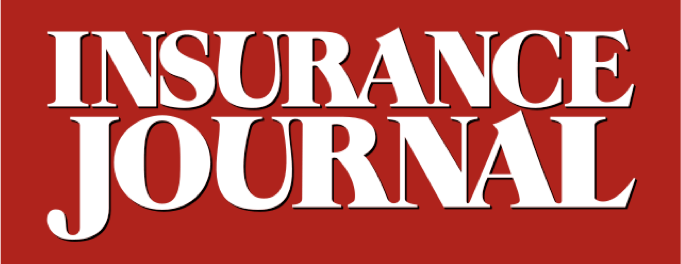A lack of bad weather isn’t always a good thing.
It looks like the 2025 Atlantic hurricane season is wrapping up in quiet fashion—aside from Hurricane Melissa, which caused catastrophic damage in Jamaica before impacting the surrounding area—without any U.S. landfalls.
There are several factors that influenced the tame season, including a weaker Bermuda High farther east, dips in the jet stream over the eastern half of the nation, a rare interaction between two hurricanes, dry air and disruptive wind shear, which helped prevent hurricanes from making landfall along the Atlantic or Gulf coasts this year, according to AccuWeather.
That lack of activity was good for homeowners and people in the paths of the devastating storms, but it also meant no mass deployments of adjusters, no surge in hiring, and as a result, it led to no catastrophe experience for new adjusters.
Geoffrey Conrad, who has been in claims for more than 20 years, much of that time training insurance adjusters, was already worried about a lack of quality experience for claims professionals, a field that has also seen artificial intelligence and streamlining driving down pay—and apparently qualifications—for entry level claims jobs.
“I am greatly concerned about the lack of deployable events over the past two years,” he said.
Last year’s Atlantic hurricane season was far busier, but it didn’t provide the large number of claims that would get numerous adjusters the valuable work experience of handling claims following a catastrophe, he said.
“Helene and Milton were big storms, but the number of claims that came from those storms were very low,” Conrad said. “I speak to adjusters all the time—they reach out to me looking for opportunities—and they are leaving. A lot of them are actually looking into going to the public adjuster route; some of them are going into appraisal. They have to put food on the table, and they were really counting on a busy season to kind of help with the finances. These adjusters cannot sit idle for very long, so they’re leaving this industry, and that concerns me because it’s going to be starting over almost with training new talent.”
After he lost his job with Crawford as director of training earlier this year, Conrad decided to try independent training. And what he’s found so far is that there is a lack of business to support him.
“There’s very little interest in anyone getting trained, because if you don’t see an opportunity to immediately get deployed, no one is investing in training. Without any event, there’s no training,” he said. “Unfortunately, you’re seeing a lot of skills just basically fall off the map and everybody’s going to be relearning everything if we do have a winter storm or any deployable event sadly.”
Andrew McCallum, vice president specialty operations at Sedgwick, is another long-lived claims professional. He started in claims in the 1980s, and he has seen the impact that slow seasons can have on the profession.
“I’ve been through this, and I think 2015 was the worst year in claims ever,” McCallum said. “It just was one of those years that you just couldn’t get up off the ground, and it really did create a dynamic that people weren’t used to.”
The global modeled insured average annual property loss from natural catastrophes is now roughly $152 billion, according to Verisk. In 2015, indemnity payments were $30.7 billion, “so it was really just a marginal year, and it really created this dynamic,” McCallum said.
This year is different. Global insured losses by the first half of this year reached $100 billion, but roughly $92 billion came from wildfires and severe convective storms in the U.S., according to Aon’s Global Catastrophe Recap: First Half 2025. The wildfires, such as the devastating blazes in L.A. in January, produced big losses but less claims work because many properties were total losses, and the experience those adjusters did get was limited to responding to losses from fires, McCallum said.
He, like Conrad, has been getting calls from adjusters in search of work.
“I probably get five phone calls a day from people saying, ‘Hey, do you have any work for me? Do you have any deployments, or can I work the desk for you for a while?'” he said.
McCallum was asked if the lack of work has him concerned about the lack of training that comes with it.
“100%, yeah,” he replied.
Adding to his concern is the “silver tsunami,” in which well-experienced baby boomers are starting to cycle out of the business and retire.
“It’s really going to be a big deal,” he said. “There’s an imminent need for mentorship programs, training programs.”
Conrad has already noticed the lack of experience is having an impact.
“There are firms that will deploy what I like to call ‘fill-in billers.’ These are licensed-only adjusters with no training to ultimately make the firm money just by babysitting claims until they can release that untrained adjuster and then buy some time to get the expert adjuster that knows what they’re doing to ultimately close the client,” Conrad said.
Tim Parker, a long-time claims professional who hosts a podcast called The Adjuster’s Diaries, in which he talks about trends and gives observations on the state of the industry, has personal experience with a “fill-in biller,” which he recounted for Claims Journal for a previous article.
The Texas resident had a loss during the 2024 hurricane season, which included roof damage, the loss of a shed in his backyard and the destruction of some siding. The carrier sent someone who had been working in the fast-food industry just six months earlier, who Parker believed was too heavy to get up on his roof.
He sent the adjuster home without the man getting up on the roof to survey the damage, and he called the carrier and asked them to send somebody more experienced and qualified to examine his home.
Parker said that after he went through three adjusters to finally get a loss estimate of roughly $6,000, he hired his own adjuster and took it to appraisal. The insurer wound up paying $78,000, he said.
There are plenty of efforts to recruit new adjusters into the field, but Conrad said he worries that some of those efforts are hurting rather than helping the profession.
“There’s a lot of social media personalities that are advocating that you can come in with just an insurance license and you can make six figures in six months, and I just cringe each time I see these videos pop up on my social media pages, because that is extremely unrealistic.”
This article was originally published by Claims Journal, Insurance Journal’s sister publication.
Was this article valuable?
Here are more articles you may enjoy.



 Brookfield Targets Global Dominance in P/C Insurance Coverage
Brookfield Targets Global Dominance in P/C Insurance Coverage  Aon Adds to List of Brokers Suing Howden US for Alleged Poaching, Theft
Aon Adds to List of Brokers Suing Howden US for Alleged Poaching, Theft  North Carolina Sting Operation Alleges Roofer Damaged Shingles to File Claim
North Carolina Sting Operation Alleges Roofer Damaged Shingles to File Claim  California Again Delays Wildfire Protection Rules for Homes
California Again Delays Wildfire Protection Rules for Homes 

